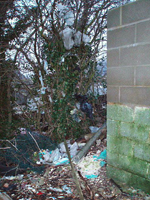



2013 & 2014


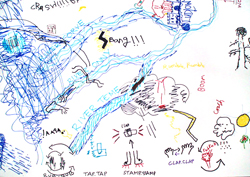
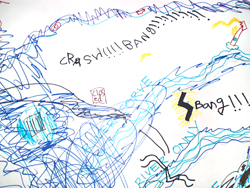
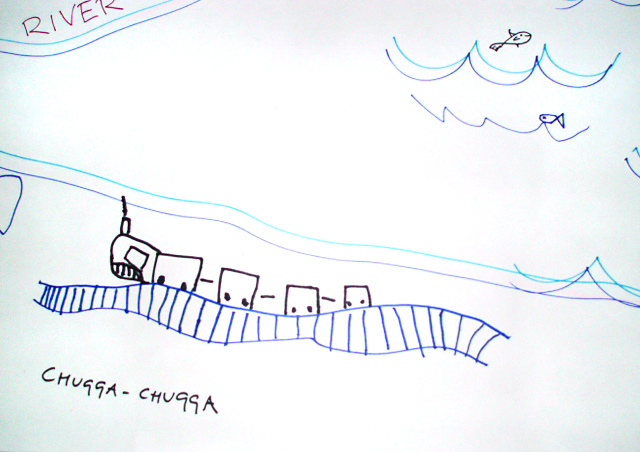

Water Scores by Onny School
Water Instruments
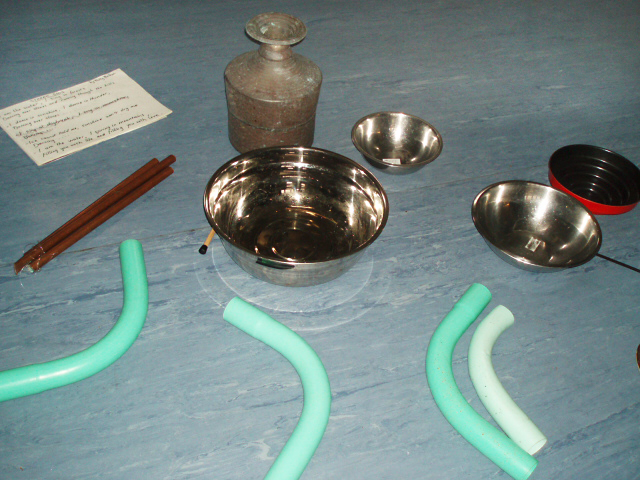
The groups involved were: Knighton School Choir, Knighton School Eco-club, Radnor Improvisers, Knighton Handbell Group, Castle Voices (community choir) the Knighton Luncheon Club. The age range spanned from 7-70 years old. Members of the Knighton Lunch Club gave accounts of the changes they have seen in river flow and landscape over time.
The Knighton performance was packed out, mainly because of the involvement of the school Eco club and the choir, whuch numbers about 20 children. Several parents came up afterwards and said how much they had enjoyed listening to new kinds of music and sounds. Additionally, we raised over £200 in donations for Water Aid, quite impressive for a small rural community.
The project was very successful in introducing a wide range of people to improvising techniques. The handbell group especially said they had learnt a lot and are eager to do more. We felt we succeeded in getting people to realise how much more they can do than they think..for children this is not such an issue as they are generally able to experiment once they are given encouragement but it was good to see the adults (choir, handbell group) able to do this as well. A specially-composed film with shots of sea and rivers gave added atmosphere and provided a structure for the performance. Recorded sounds of sea, river, and underwater animals (newts and fishes) were woven into the live music.
The specially constructed musical water wheel worked brilliantly: this is something we want to develop, working with a number of schools on a site specific project - using paddle and pedal power!
The eco club were great: they made up their own pieces, experimented with playing bottles, and made animals from junk materials to go into the exhibition. Lots of people are seeing the exhibition at the library which is open regularly.
The Knighton School choir included some very young children who had never sung in public before and their performance was impressive.
Because we focused with the Eco club on plastic waste and the damage it is causing to life in the oceans, we invited them and their families to join in the regular litter picks set up by the Teme Valley Environment Group. We hope that as the weather improves they will feel more like turning out! The children now know more about the dangers of plastic waste in the oceans and the damage caused by an over-packaged consumer society. We also talked about the effects of climate change as it heats up the oceans, causing acidification and rising sea levels.
We look forward to more watery music this year.
Recordings and videos from the performances.
Yemaya round and hand bells (water trickling)
For all at last return to the sea
video 2
2014
Anne Loughran
Anne Loughran was a key member of Footloose for the entire water project, both last year and this year. She taught us the inimitable 'Little Green Frog' song - loved even by 11 year-olds!
We are very saddened by her sudden and untimely death, and sorely miss her as a friend and colleague.
Clun School
What we did
Music and writing including composition and improvisation. Improvised vocal and body percussion watery sounds. Talked about issues to do with water use and waste, pollution and plastic, and 'virtual water' hidden in some things we don't normally think of as watery (fast food, cars etc). Rivers and river creatures.
Devised song and raps in small groups, based on what we had talked about:
Learnt Yemaya - round based on song to the African Water Goddess, The Scottish folk song Hinna Hinna sung traditionally for waulking wool, Mighty Severn River (procession). Children with instruments made up parts for their own songs and the procession.
Making
With help from Ciara made an amazing water creature from recycled materials, based on a combination of the children's original drawings. It involved building and decorating a willow structure, with a head and body, weaving with plastic strips, creating the creature's internal organs and working out how to carry it for the procession. With Charlie, learnt how to measure and cut copper tubing to make a tuned set of copper bells. Learnt how length and width of a tube affects its pitch.
With Paul, cut and stripped willow to make beaters. Cut plastic tube into different lengths and fixed handles that could then be easily played in the water to produce different notes and sounds.
Technology
A small group, helped by Charlie, made a compelling piece of film and recording using water sounds and images which formed the opening of our performance.
In a relatively short space of time, put together a coherent performance that kept an audience of younger children engrossed for about 20 minutes.
Feedback from pupils and teachers was excellent. The teachers said they were amazed by the way we managed to engage 35 children in a variety of activities. By having several different activities small groups of children could rotate from one thing to another and so they did not get bored. They also learnt some practical skills including use of tools in addition to extending their musical and artistic abilities. We had some good discussions about water use and waste and the environment.
The technology group was hand-picked which worked well, as it required a small focused group. Apart from that, everyone had a go at everything.
One child suggested we wired up the 'beast' to have flashing lights and sounds - we could develop this using bicycle power provided by energetic kids!
Onny Primary School June - July
1. We worked outside, using water and getting the children to make rhythms splashing the water with their hands. Anne showed them a map of the local river system. We played the web game and talked about how everything is connected, and briefly mentioned migration and eels. We built up a simple rhythmic chant using the names of the rivers. We thought of different words that are associated with water Ð splish, drip, etc. We introduced the frog songs and the other songs.
2. Indoors - we did more on rhythm, clapping etc and tried out the rain storm exercise. Several of the children came up with their own body rhythms and were quite relaxed about it. Then small groups of children took turns drawing on a long paper scroll. Using the river as a story line, and listiening to the sounds made by the rest of the group, they drew pictures/images along the river to represent the sounds we were going to make, including frogs, birds etc. So we ended up with a 'story score' or something like that. We practised the songs. At the end they all made little floating fish with Ciara which they really enjoyed and was a good way to calm everyone and bring down the energy a bit. This was the session that had the greatest attendance - 14 kids.
3. Preparing for the performance. A small group; it did not help having half term in between. However the school guitar group got co-opted into accompanying a song which boosted the numbers just for that bit.
All practised the rain storm. Then we worked through our score using water percussion, ordinary percussion, voices and body rhythms. In their break they made snappy fishes which they found relaxing.
4. Performance. Suddenly we had more children,but all of them had been to at least one session. We managed to involve the parents and families in the performance too.
Powys Young Carers
Over two glorious sunny days we stayed mainly by and in the River Teme in Knighton. For unclear reasons attendance was low despite publicity so we had a small group of five. This however was a good size for what we did. Different children took turns filming and recording as the rest of us experimented with making sounds with different things in the river - copper and plastic tubes, metal bowls, saucepans etc.
We explored the sounds that can be made just with our own bodies and built up rhythms. We did Baka type percussion using just our hands slapping the surface of the water.
We also did a bit of simple river beastie ID and talked about water on earth, virtual water, the wastefulness of the plastic bottled water industry etc
Two of the children are in special needs at school and it was wonderful to see how they blossomed and became engaged in a small relaxed group.
At first the children were worried about getting cold in the water - by the second day they were begging to get in and swim whenever possible!
The children wrote thoughts and snatches of poetry in a book and also designed a picture/musical score depicting experiences and impressions over the two days. Though they were quite shy about singing they learnt the Yemaya round well enough to sing in unison.
We have now done our first indoor workshop at a regular Young Carers session at the Llandrindod Wells Youth Club, using bowls filled with water and experimenting with lots of different ways of making sounds, then building up repeating loops of sound. We have three more sessions in which we'll construct a bicycle instrument and do more sound experiments. Those young people who are interested will make another film which will be shown at the Youth Centre in December with accompaniment by the Radnor Improvisers.
A list of group words put together during the workshop can be downloaded here

Please contact Camilla Cancantata to find out more.
